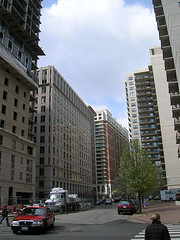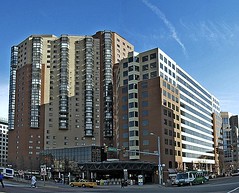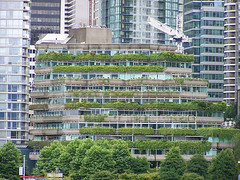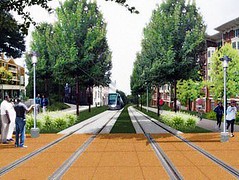An open letter to the smart growth community

Posted October 22, 2008 at 2:03PM
There is no way we should be settling for, or applauding, this . . .
When we should be advocating this:
It is time to take smart growth advocacy beyond "smart growth" as we have been defining it. In short, we should be doing more for the environment. And we should be doing more for the social health of our neighborhoods, too.
I am proud to have been at the center of the national smart growth movement since its beginning. But I believe it is time for advocates and practitioners to embrace a broader, more holistic vision of what smart, sustainable development should be in the 21st century.
This will mean retaining, but also being more ambitious than, the largely "infill, compact development, and transit" agenda for smart growth that has served us very well so far.  It will also mean reforming the broader environmental community's (yes, including my own group's) advocacy for watersheds, green technology, and cities to place those issues in a context that more explicitly embraces growth and urbanism. The environment demands this of us, and so does our aspiration to teach and to lead.
It will also mean reforming the broader environmental community's (yes, including my own group's) advocacy for watersheds, green technology, and cities to place those issues in a context that more explicitly embraces growth and urbanism. The environment demands this of us, and so does our aspiration to teach and to lead.
This may seem a bit remote to those of us who are focused intensely on an immediate legislative agenda (e.g., the upcoming federal transportation bill or the wonderful recent achievement of California's SB375), a local community's comprehensive plan, or the latest proposed highway (or even LEED-ND, a fine program over whose criteria I have shed more personal blood than I wish). But I believe that we must think not just about the menu in front of us but where we want to - and where we can - take our communities over the next generation and beyond.
Sprawl as we have known it may not be dead but it is surely not well, and we are already seeing the beginning of its end. The smart growth movement can take a lot of credit for developing and pressing the more compact and transit-oriented development that will replace it. This is wonderful; but it is not enough. We should now begin developing a vision and a program of advocacy that looks beyond fighting sprawl and focuses not just on where, how much, and by what mode of travel, but also on what, and how.
Smart, sustainable development for the 21st century should include not just infill, density, and better transportation choices but also the following:
- Green building (there is simply no excuse for not doing it at this point)
- Urban green infrastructure, including neighborhood parks (that can help heal ecosystems while also making the densities we need for transportation efficiency more hospitable)
- Inclusive urban revitalization, with equity, affordability and historic preservation (most US central cities and older suburbs have so much capacity for growth, if we do it right)
 Walkable neighborhoods that facilitate fitness and health
Walkable neighborhoods that facilitate fitness and health- Livable, human-scaled, place-based neighborhoods that create good ambassadors for our movement and that NIMBYs want rather than fight
Most of us, if asked, will say that we already support these things, and we do. But we almost never advocate them as a whole.
We're all guilty of being too narrow. Frankly, I think it is a disgrace that green building advocates have almost gleefully turned a blind eye to the locational consequences of building. I was personally involved in an innovative housing partnership that has been remarkable in its accomplishment for green building and affordability, but that largely failed to embrace meaningful smart growth standards. My very good friends in new urbanism can be inspirational and are the very best at placemaking, but can sometimes turn soft when it gets to location and green building. Some of my colleagues in the environmental community still act parochially, as if growth and development will somehow disappear or become more benign if we chase it away from a place that occupies our attention, when in fact it is likely to find a place or a form that elicits less resistance but the prospect of even more environmental damage.
But we in the smart growth movement, too, are at fault. Much of what is being constructed, for example, in the name of transit-oriented development -- frequently with our applause -- does little for the environment other than transportation efficiency and is just plain ugly. I don't blame NIMBYs for being resistant. Yet we seldom push for models or incentives that ask for more.
We are all, nearly every one of us, being too limited in our vision.
 We know that compact development patterns can reduce carbon emissions from transportation by 20-40 percent or even more if ideally located. But, if Greensburg, Kansas can set a more ambitious goal of reducing its total carbon footprint by half through walkability and green technology, no environmentalist should aspire to less. If my favorite developer can build project after project after project that includes not only great density and location but also green infrastructure, green building, and affordability, we should not advocate less. I am not suggesting that the smart growth movement abandon or replace our current sprawl- and transportation-based advocacy. But I am increasingly convinced that we must make our agenda more robust.
We know that compact development patterns can reduce carbon emissions from transportation by 20-40 percent or even more if ideally located. But, if Greensburg, Kansas can set a more ambitious goal of reducing its total carbon footprint by half through walkability and green technology, no environmentalist should aspire to less. If my favorite developer can build project after project after project that includes not only great density and location but also green infrastructure, green building, and affordability, we should not advocate less. I am not suggesting that the smart growth movement abandon or replace our current sprawl- and transportation-based advocacy. But I am increasingly convinced that we must make our agenda more robust.
What might this mean, you may legitimately ask? To take the same examples of immediate advocacy I mentioned above, why shouldn't there be a sustainable communities title in the new transportation bill? The research makes clear that inner-city revitalization and transit-oriented suburban development dramatically reduce automobile use and the need for new roads. 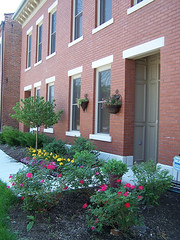 It would make perfect sense to develop a dedicated program to invest a portion of federal transportation funds not on transportation facilities per se but on attracting more development to these areas, conditioned on making the neighborhoods affordable, green, and mixed-use. We could focus the benefits especially where there are currently vacant or underutilized properties, and require or provide bonuses for parks, green infrastructure, and inclusive planning that will attract residents and businesses to these locations that have been proven to reduce driving.
It would make perfect sense to develop a dedicated program to invest a portion of federal transportation funds not on transportation facilities per se but on attracting more development to these areas, conditioned on making the neighborhoods affordable, green, and mixed-use. We could focus the benefits especially where there are currently vacant or underutilized properties, and require or provide bonuses for parks, green infrastructure, and inclusive planning that will attract residents and businesses to these locations that have been proven to reduce driving.
For the kind of metropolitan land-use planning that will be undertaken to reduce carbon emissions under SB 375 in California, or pursuant to comprehensive plans in municipalities, why not address not just where growth will occur, but also green building and infrastructure, parks, and affordability, in the same process? Let's address a variety of issues at once, with the goal of reducing more emissions than would land planning alone while creating complete, cohesive, inclusive neighborhoods. And, if you're fighting a sprawl-inducing highway or subdivision, don't just fight; propose the constructive alternative that meets the same needs without sprawl but in a greener, more appealing way.
These examples are just illustrative. The key is to start advocating these elements together, in the same forums. To close on a personal note, many of us who now work on smart growth were environmental advocates before we were smart growth advocates. We must become that again. And more.
